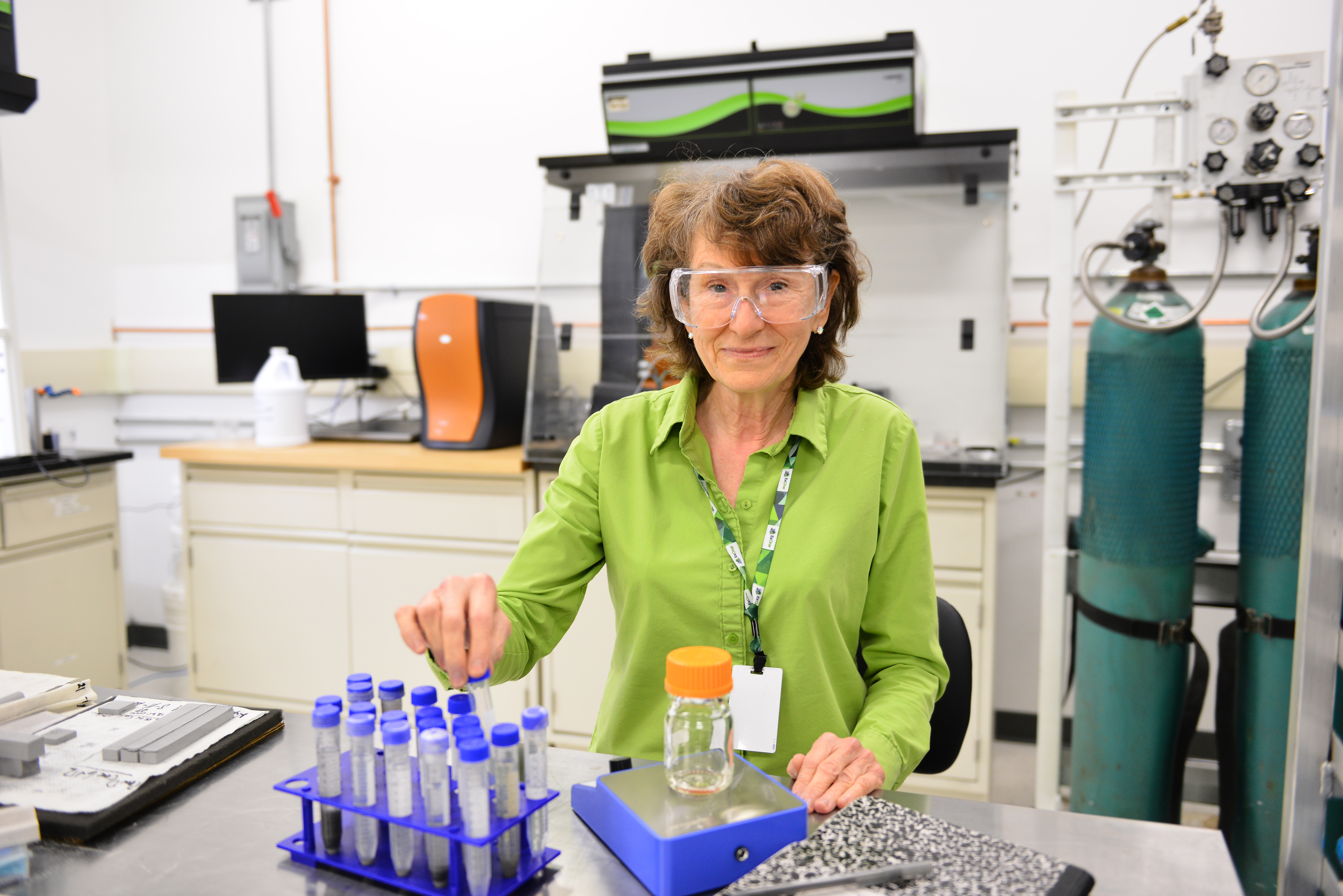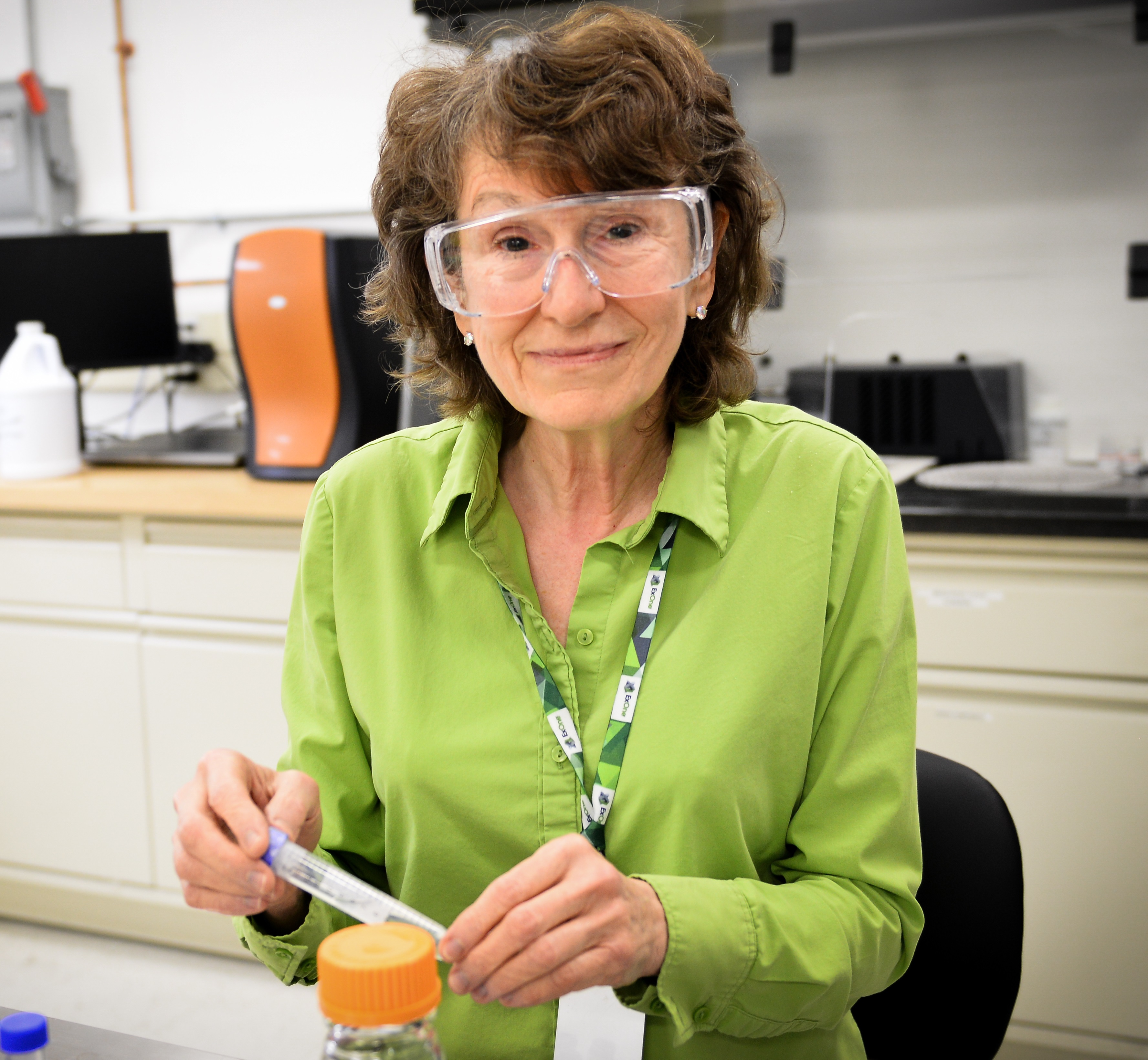- Home
- Binder Jetting Resources
- Blog
ExOne Expert: Debbie Wilhelmy
ExOne Expert: Debbie Wilhelmy, PhD

ExOne Expert: Debbie Wilhelmy, PhD
Our Senior Research Specialist has a PhD in colloid and surface chemistry with an understanding of nanoparticles that allow customers to improve green and sintered density.
Sometimes things aren’t as simple as they seem. The binder jetting process seems straightforward - simply laying down a bed of powder and applying binder in the desired shape; repowder and repeat. But to a nanoparticle expert, like ExOne Senior Research Specialist Debbie Wilhelmy, PhD, there is a complex matrix involving the chemistry and physics of all the inputs and how they impact the process of trying to marry binder with powder. But it’s exactly that challenge that provides Wilhelmy the passion for her job, “As scientists our minds never shut off because we work with so many pieces of a puzzle and we are constantly rearranging and sorting, always thinking about a piece of data to see how it fits. This is what we love to do and drives us everyday.”
And solving these puzzles for customers allows them to tailor the binder jetting process to their application; she takes pride in using the levers of nanoparticle science to dial in binder properties that produce the required final material properties and application breakthroughs.
Nanoparticles act as an aid to decrease part porosity and really assist in densification of binder jet parts. This is extremely important for binder jetting because of the difference between green part densities and the final sintered part densities needed to meet customer specifications, which, of course, vary for different applications. Nanoparticles provide an important lever that allows you to dial in those sintered density targets as well as critical product requirements like mechanical properties.
DebbieWilhelmy, PhD
ExOne Senior Research Specialist
Colloidal systems are composed of small particles, nanometer or submicron-sized, dispersed in a medium – meaning a tiny liquid, solid, or gas particle suspended within another liquid, solid, or gas. It’s this niche of physical chemistry that Debbie Wilhelmy studied and earned her PhD in, colloid and surface chemistry – or nanotechnology as it’s often called today. She then took that science into industry to become a formulator, where she notes the broad spectrum of applications from paints to foodstuff and personal care products to semiconductors, coatings, and 3D printing. Before joining the ExOne team in 2019, she worked to develop technology for a myriad of applications including thick film inks, ceramics, and coatings. She also patented a technology to produce aluminum foam from gas suspended in liquid aluminum. Wilhelmy got started with additive manufacturing through her work on the physics and chemistry of the fine feedstock powders used for metal laser sintering. Today she focuses on solid nanoparticles suspended in liquids for the binder jetting process.
She explains how binder jetting is not, in fact, just laying down powder and binder but a complex interaction of many different inputs. There are numerous powder, binder, and equipment variables that impact the final part properties and nanoparticle dispersions alone can have over a dozen variables that can impact optimal behavior and processability. A binder requires a certain wettability to land on the bed of powder, wet, wick in, and distribute itself across the layer rather than beading at the surface. Independent of its performance on the powder bed itself, the viscosity of the binder is critical because binder jetting printheads can’t process thick inks or pastes and require very, very low viscosity dispersions. “Dispersion properties are defined by the machine or process. We formulators have to tailor those dispersion properties, like weight percent of the solids, stability, and viscosity, such that when it goes in that equipment it marries with the machine and process to produce a product that meets final specifications,” Wilhelmy explained. “There are many dispersion variables that can affect making a part, but first we use specialized techniques to screen and identify the critical variables then use the “scientific method” to quantify the impact of these variables.”
And it’s her job as a scientist to identify the variables critical to the end result and focus on managing those. “Identifying critical material and process variables is so important because without it you're never going to achieve the process control and repeatability you need for scale up and sustained operational control,” she explained.
Understanding the key variables that affect the end-use part provides a set of controls to fine-tune a product printed on an ExOne machine. ”We have many levers to tailor the material and dial in the final properties for numerous applications, including automotive and aerospace,” Wilhelmy stated. Nanoparticles in binders provide one of those levers that can enhance material behavior and processing needed to hit critical product specifications, and binder is a way to introduce those additives into the process.
That’s the concept behind the ExOne NanoFuseTM particulate binders Wilhelmy develops. Nanoparticles dispersed in the binder fill the gaps between powder particles to improve green density, which can increase sintered density while reducing shape distortion. “Nanoparticles not only act as an aid to drive part density up, but these additives provide a unique opportunity to tailor the microstructure and surface properties. Which in the end can lead to new and improved metal or ceramic properties and eventually new products,” she stated. "All of this is extremely important for binder jetting because of the difference between green part densities and the final sintered part densities needed to meet customer specifications, which, of course, vary for different applications. Nanoparticles provide an important lever that allows you to dial in those sintered density targets as well as critical product requirements like mechanical properties."
Dimensional and microstructure control is critical for the mass adoption of binder jetting in industries like automotive and aerospace and Wilhelmy’s research will help move the industry forward by enabling control of part microstructure and surface finish as well as consistent shrinkage to target sintered densities - all required to deliver final properties and tolerances.
Wilhelmy is part of the team that recently announced aluminum 6061 advancements. “Getting aluminum to densify to 99% using a technology such as binder jetting vs traditional methods is a great achievement,” she explained. “Coupling strong material and fine particle science with binder jet engineering allows you to close what can be a relatively large gap between green and high final sintered density as well as generate the type of microstructures needed for critical product properties."
She’s grateful that, as a chemist, her job allows her to work directly with customers on solving their challenges, noting “It's so aligned with the science and processing of fine powders and dispersions, and it is just super exciting to be able to see what science can do for technology development. Throughout my career I've had the opportunity to not only work within the R&D groups, but I've been able to carry solutions and inventions all the way to commercialization onto the manufacturing floor. If you utilize the scientific method and a systematic approach, you’re likely to develop technology that's going to stick and successfully be able to scale up and implement. And that's what I love to do.”
On-Demand Webinar
Explore ExOne's patented method of printing NanoFuse™ particulate inks in binder jet 3D printing. We discuss how particulate inks improve resolution and sintering, especially with certain materials such as copper and aluminum.
Learn more about nanofuse binders
